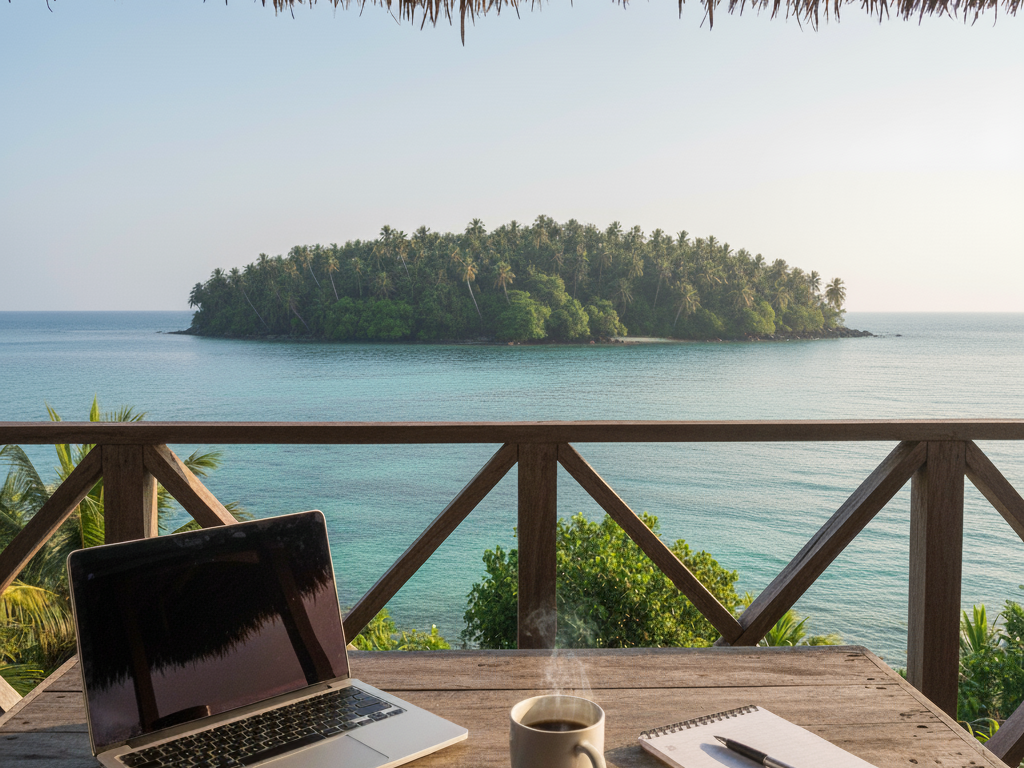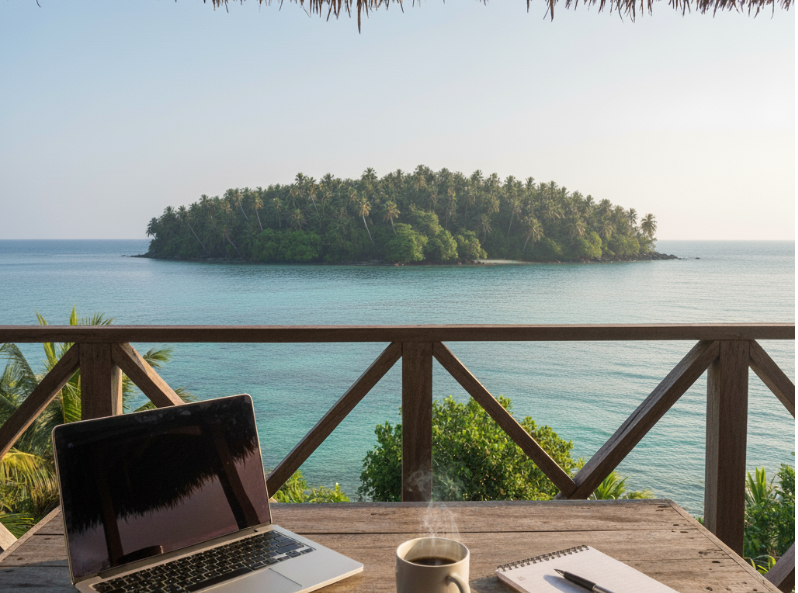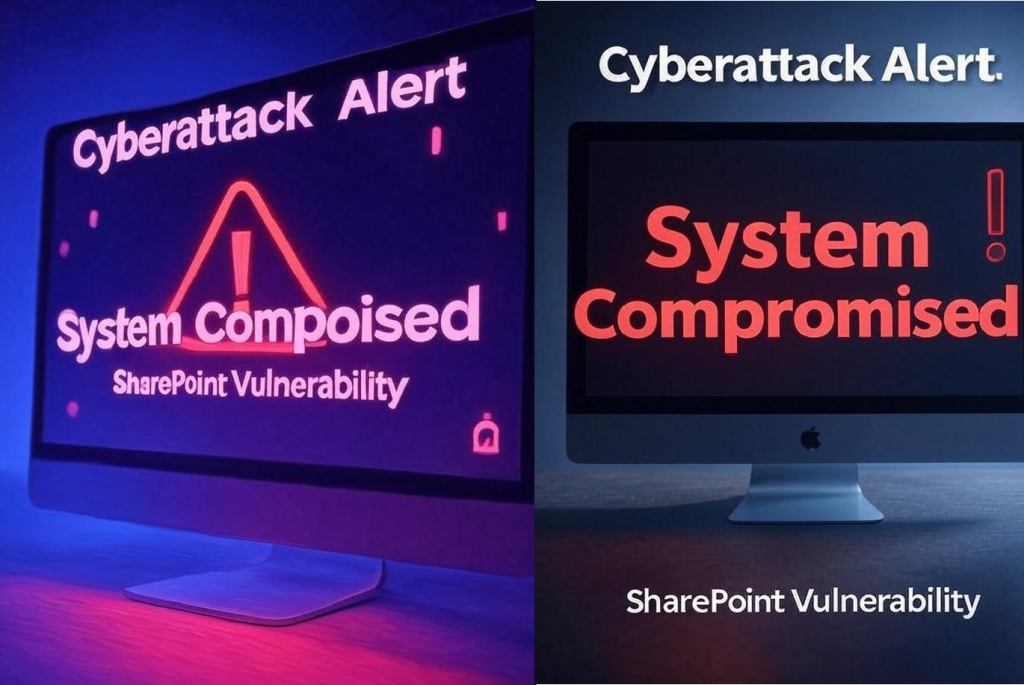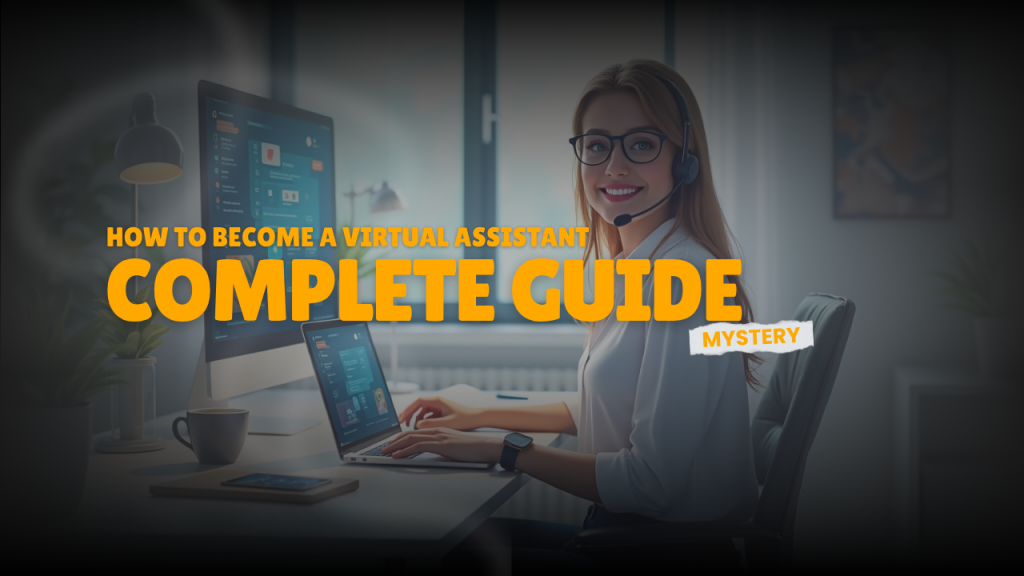Section 1: Analysis of the Core Asset: Deconstructing the “Andaman Workation” Blueprint

1.1. The Unique Selling Proposition (USP): “Pragmatic Paradise”
An analysis of the 1,000-word source article, “Andaman Workation: Boost Productivity & Travel India!”, reveals that its primary strategic value is not aspirational travel but the practical, honest resolution of the “productivity in paradise” paradox. The article’s core strength lies in its immediate and transparent handling of the primary anxieties of its target audience (students, freelancers, and early-career professionals).
Unlike conventional travel guides that sell an unattainable “digital detox,” this article establishes its authority by immediately addressing the “Connectivity Conundrum” and “Power Cuts” as “non-negotiable realities.” This approach positions the article as a practical blueprint—a term the source text itself employs—rather than a simple travelogue. For an audience that cannot afford a true disconnection from work or study, this honesty is the article’s most valuable asset.
The article’s Unique Selling Proposition (USP), therefore, is risk mitigation. It directly addresses the core, unspoken fear of the target audience: “What if I travel to paradise and subsequently fail my exams or lose a client because I cannot get online?” The article functions as a professional and academic “permission slip,” validating the trip by providing a clear, actionable plan for success.
This strategy is evident in the article’s hook. While the initial hook is the aspirational “Tired of the same desk?”, the true solution and value proposition are found in the functional data points: “Airtel has launched 5G” and “Here’s how to handle power cuts.” This indicates that the article is not selling the Andamans as a place as much as it is selling a solution: the proven, viable, and connected remote-work experience in an exotic Indian location. This distinction is critical for all derivative content and marketing efforts, as it shifts the focus from simple wanderlust to professional enablement.
1.2. Core Content Pillars for Repurposing
The source article is built on three foundational content pillars. Any derivative content, such as a short article or social media post, must reflect these pillars to maintain the asset’s core value and credibility.
- The Connectivity Blueprint: This is the article’s most valuable and practical data. It provides hyper-specific, actionable intelligence that is difficult to find elsewhere. This includes the explicit recommendation of Airtel 4G/5G as the “winner,” the role of BSNL as a “runner-up” for wider coverage in remote areas, and the critical warning to “Avoid: Jio & Vi.” It also sets a realistic expectation that true high-speed fiber broadband is only available in Port Blair, not on Havelock or Neil islands.
- The “Authentic” Workspace: The article builds trust by rejecting the non-existent “sterile co-working spaces” that its audience might (falsely) expect. Instead, it provides a realistic and vetted list of alternatives: specific, budget-friendly homestays (e.g., Haven Garden Homestay, Sweet Mango Tree Homestay), backpacker-friendly social hubs (e.g., Flying Elephant), and reliable “café offices” (e.g., Bonova Cafe & Pub).1 This demonstrates deep, on-the-ground knowledge.
- The Productivity & Power Schedule: This pillar provides the “how-to” for execution. It confronts the “non-negotiable reality” of “frequent and scheduled power cuts” and provides the toolkit (laptop with a great battery, large-capacity power bank). This is reinforced by the “Sample Workation Schedule,” which structures the day around these realities (e.g., “9:00 AM – 1:00 PM (Deep Work)” when the sun is high and before potential afternoon power cuts).
1.3. Identifying “Golden Nuggets” (Key Actionable Phrases)
To effectively repurpose the long-form article into short-form, “eye-catchy” content, it is essential to extract the most potent, specific, and credible phrases. These “golden nuggets” are the building blocks for high-engagement marketing copy.
- “Airtel has launched 5G”: This is the “game-changer” that makes the entire premise viable. It is the single most important news hook in the article.
- “Your mobile hotspot will be your best friend”: This establishes the primary tool for success and counters the common, incorrect assumption that café Wi-Fi will be sufficient.
- “Bonova Cafe & Pub (Havelock): A digital nomad favorite”: This specific location serves as proof of a pre-existing digital nomad scene, lending credibility and providing an immediate, actionable destination.
- “Non-negotiable reality: Power Cuts”: This phrase is a powerful trust-builder. Using it in short-form content immediately signals that the full guide will be honest and practical, not a fantasy.
- “The Half-Day Win” / “Scuba Certification”: These phrases represent the reward. They masterfully blend productivity and leisure, showing a tangible way to “achieve a major life goal” (like a PADI certification) while still managing a career.
These specific, data-driven phrases are the key to creating a short-form teaser that feels both aspirational and, most importantly, authoritative.
Section 2: The Transformation Strategy: Translating a Practical Guide into an “Eye-Catchy” Narrative
2.1. The Strategic Goal: Teaser, Not Summary
The primary objective of the requested “short eye-catchy article” is not to summarize the 1,000-word source asset. A summary would be counter-productive, as it would satisfy the reader’s curiosity and eliminate the need to click through to the full article, thereby wasting the value of the long-form content.
The strategic goal of the short-form article is to function as a high-conversion teaser. It must create a “knowledge gap” that compels the user to click through to the long-form blueprint.
This is achieved by following a specific formula:
- Present the Problem: Acknowledge the “Connectivity Conundrum” and the audience’s core fear of being disconnected.
- Allude to the Solution: Mention the “5G game-changer” and the existence of a proven “blueprint.”
- Showcase the Reward: Evoke the “Scuba Certification” or “coding by the beach” fantasy.
- Withhold the “How”: The short article must not reveal which SIM card to buy, the names of the best cafes, or the specifics of the productivity schedule. That information is the “payload” of the full article.
The short article’s function is to make the long-form guide indispensable by proving it contains the critical, non-obvious solutions to the audience’s biggest problems.
2.2. Narrative Framework: The “Dream > Reality > Solution” Hook
To be “eye-catchy” and effective, the short-form narrative must follow a proven three-act structure that first engages the reader’s emotions, then empathizes with their logic, and finally presents a clear path to a solution.
- The Dream (Attention): The opening line must evoke the core fantasy of the “workation.” This aligns with the aspirational visuals of working from a beautiful, tropical location.3
- The Reality (Interest/Problem): The narrative must pivot immediately, using a phrase like “But…” or “Let’s be real…” This pivot acknowledges the known problem—”But what about Wi-Fi?”—and instantly builds trust. It shows empathy for the audience’s core fear of a failed trip, which was identified as the central pain point in Section 1.1.
- The Solution (Desire/Action): The final part of the narrative must state unequivocally that a solution exists (e.g., “The Andamans just got a 5G upgrade”). It then frames the full, long-form article as the exclusive blueprint to access that solution, leading directly to the call-to-action.
2.3. Table 1: Content Transformation Matrix (Long-Form to Short-Form)
This matrix provides a repeatable methodology for the content atomization process. It visualizes how to translate the functional, practical points from the source asset (Section 1) into compelling, emotional, and “clickable” hooks for the short-form article (Section 4).
| Long-Form Point (Functional) | Audience Pain Point | Short-Form Hook (Emotional Teaser) |
| “Airtel has launched 5G in parts of Port Blair. This is a game-changer for digital nomads.” | “I’ll be totally disconnected and can’t work. It’s a ‘digital detox’ only.” | “Myth: The Andamans are ‘digital detox’ only. Fact: The 5G game-changer just landed.” |
| “Your mobile hotspot will be your best friend. Hotel and café Wi-Fi is notoriously slow…” | “Won’t the cafe Wi-Fi be good enough? This is too complicated.” | “Don’t rely on spotty café Wi-Fi. Your mobile hotspot is your new best friend.” |
| “The Most Important Practical Warning: Power Cuts… A laptop with a great battery, at least one large-capacity power bank…” | “My laptop will die, and I’ll miss my deadline. It’s too risky.” | “Your laptop’s new BFF: a high-capacity power bank. We’ll explain why it’s non-negotiable.” |
| “A Sample Workation Schedule… 6:00 AM – 9:00 AM (Explore)… 9:00 AM – 1:00 PM (Deep Work)” | “I’ll be too busy scuba diving to get any work done, or too busy working to see the island.” | “How to get PADI-certified in the morning and still crush your client work by 1 PM.” |
Section 3: A Comprehensive Visual Strategy: Sourcing the “Authentic Paradise”
The selection of an accompanying image is a critical strategic decision. An in-depth analysis of the provided image-search results 6 reveals three distinct visual themes, along with a significant pitfall that must be avoided.
3.1. Thematic Analysis of Available Imagery
The available stock photo options fall into three main categories:
- The “Impractical Fantasy”: This is the dominant and clichéd “digital nomad” visual.8 It features laptops on a bare beach, often perilously close to the water, or individuals working from a hammock.3 Specific examples include “working on laptop while relaxing in the hammock on the beach at sunset” 3 and “Man with laptop in beach hammock”.4
- The “Aspirational Reality”: This theme shows a functional-but-beautiful remote work setup. It is a more credible and realistic portrayal of the “workation” concept. This category includes images of laptops in beach cafes 1, such as “At the beach coffee shop… young Caucasian man working on laptop” 12, or, most compellingly, from a hotel or guesthouse balcony with an ocean view.13 Examples like “woman relaxing on tropical terrace with laptop enjoying ocean view” 13 and “a table with chairs and a view of the ocean” 16 are common.
- Generic Scenery (The Misattribution Trap): This category consists of beautiful, high-quality images of beaches, boats, and islands.6 While visually appealing, they lack a “work” element and, as detailed below, often misrepresent the location.
3.2. CRITICAL PITFALL: The Thailand-Andaman Geographic Misattribution
The single most important finding from the visual research is a pervasive and critical error in stock photo databases: images of Thailand are consistently mislabeled as “Andaman.” This occurs because locations like Krabi, Koh Lipe, and the Similan Islands are geographically located in the Andaman Sea, leading to keyword cross-contamination.
Direct evidence of this misattribution is widespread in the search results:
- 6 and 6 explicitly state: “Sunset Over the Andaman Sea in Krabi Province, Southern Thailand,” “Concept touristic landmark of Thailand,” and “Amazing aerial view of Ko Phi Phi Leh with Maya Bay.”
- 23 and 23 feature an “aerial view of longtail boats moored on the beach in koh lipe in thailand.”
- 17 and 17 reference “exploring the similan islands in the andaman sea photo” and “krabi and andaman islands a stunning beach paradise in southern thailand photo.”
Using one of these images—particularly the quintessential Thai longtail boat 23—would be a catastrophic strategic error. It would instantly destroy the credibility of the long-form article. The article’s entire value proposition is built on hyper-specific, on-the-ground Indian (Andaman) advice (e.g., “Airtel” vs. “Jio,” “Bonova Cafe”). The target audience, which includes savvy Indian students and freelancers, will immediately recognize a Thai landmark.
This visual error breaks the “social contract” with the reader. The reader’s logical conclusion would be: “If they got the photo wrong, did they get the 5G info wrong, too?” At that moment, all trust is lost, the brand’s authority is shattered, and the click-through is wasted. Therefore, the primary visual directive is to avoid generic “Andaman” searches and actively filter out any imagery that shows Thai-specific landmarks.
3.3. Strategic Recommendation: “Aspirational Reality” > “Impractical Fantasy”
The “laptop in the sand” visual 3 is the wrong choice.
Rationale:
- It is a visual cliché that lacks originality.
- More importantly, it directly contradicts the source article’s own practical advice. The article implicitly warns against this exact scenario (due to heat, sand, lack of power, and the unreliability of public Wi-Fi). Using this image would create a visual-textual mismatch, undermining the article’s core message of “pragmatism.”
The correct visual strategy is to select an image from the “Aspirational Reality” theme.12 This theme aligns perfectly with the article’s practical solutions.
The strongest and most strategically sound image concept is The Guesthouse Balcony. An image depicting a laptop on a table on a guesthouse balcony, with the view of the Andaman sea in the background, perfectly encapsulates the “Pragmatic Paradise” USP. It is aspirational (the view) and simultaneously realistic (the functional workspace, complete with a table). This visual aligns 100% with the article’s practical advice of working from a homestay (like Sweet Mango Tree Homestay) or guesthouse 25, rather than on the beach.
Section 4: Deliverable: The “Eye-Catchy” Article (Draft and Rationale)
This section provides the first core deliverable, as requested by the user, followed by an expert deconstruction of its creative and strategic choices. This commentary links the final text directly to the analysis in Sections 1, 2, and 3.
4.1. The “Eye-Catchy” Article (Final Draft)
Headline: Your New Office: An Andaman Island?
Body:
Tired of your desk? Imagine finalizing that project with your toes in the sand.
But let’s be real: a workation is 90% “work” and 10% “vacation.” And the biggest fear? No signal.
Forget the “digital detox” myth. The Andaman Islands just got a 5G upgrade, and it’s a game-changer.
This isn’t just a travel guide. It’s a practical blueprint for your most productive adventure yet. We’ve found the one SIM card that actually works, the exact cafes with stable Wi-Fi, and the “non-negotiable” power bank you’ll need to survive power cuts.
Ready to swap your Zoom background for the real thing?
Call to Action: Get the Full Blueprint: Our Ultimate Andaman Workation Guide
4.2. Writer’s Commentary and Strategic Rationale
The construction of this short article is deliberate, with each line serving a specific function based on the strategy defined in Section 2.
- Headline: “Your New Office: An Andaman Island?”
- Rationale: This headline is posed as a question to encourage engagement and consideration. The phrase “Your New Office” is active, possessive, and frames the aspirational trip as a practical, professional decision, making the dream feel attainable.
- Line 1: “Tired of your desk? Imagine finalizing that project with your toes in the sand.”
- Rationale: This is “The Dream” (Section 2.2). It immediately hooks the reader by identifying their pain point (“Tired of your desk”) and presenting the core fantasy. It aligns with the “Impractical Fantasy” visual 3 that the audience expects to see, drawing them in.
- Line 2: “But let’s be real… And the biggest fear? No signal.”
- Rationale: This is “The Reality” (Section 2.2). It pivots immediately to the audience’s primary pain point and the article’s core USP: risk mitigation (Section 1.1). The colloquial phrase “let’s be real” builds instant trust and empathy, positioning the brand as a savvy, honest guide who understands the real stakes of a workation.
- Line 3: “Forget the ‘digital detox’ myth. The Andaman Islands just got a 5G upgrade…”
- Rationale: This is “The Solution” (Section 2.2). It directly addresses the “no signal” fear with the “golden nugget” (Section 1.3) from the source article. It presents this 5G upgrade as new, game-changing information, creating a strong sense of intrigue and a “knowledge gap.”
- Line 4: “…a practical blueprint… the one SIM card… exact cafes… survive power cuts.”
- Rationale: This is the proof of value and the primary driver for the click-through. It uses the source article’s own powerful language (“blueprint”) and teases the hyper-specific solutions (the “golden nuggets” from Table 1) without giving them away. It creates an urgent need to acquire this proprietary knowledge.
- Call to Action: “Get the Full Blueprint: Our Ultimate Andaman Workation Guide”
- Rationale: The CTA reinforces the article’s value. It is not just a “guide” to read; it is a “blueprint”—a professional tool for success. This wording aligns with the target audience’s career- and goal-oriented mindset.
Section 5: Deliverable: Strategic Image Prompting and Asset Selection
This section provides the second core deliverable, building directly on the comprehensive visual strategy from Section 3.
5.1. Recommended Image: “The Aspirational Reality”
Based on the analysis in Section 3.3, the ideal image is not the “laptop on the sand” cliché. The most strategically sound image is a First-Person Perspective from a Guesthouse Balcony.
Visual Description:
The shot is from the worker’s point of view, creating an immersive “you are here” experience.
- Foreground: In the foreground (which can be in sharp or soft focus) is a simple, rustic wooden table. On the table sits an open laptop, a cup of coffee, and a notebook.16 These are the tools of the “work.”
- Background: In the background (the “reward”) is the stunning, in-focus view from the balcony: the bright, clear turquoise Andaman Sea, lush green tropical foliage, and perhaps a distant, jungle-covered island.13
- Lighting: The lighting is bright, warm, early morning sun, suggesting the productive 9 AM “Deep Work” session described in the source article’s “Sample Workation Schedule.”
Strategic Rationale:
This image perfectly balances “work” (the laptop) with “paradise” (the view). It is highly aspirational but, unlike the hammock photos, it is believable and practical. It aligns 100% with the source article’s pragmatic advice of working from a quiet homestay or guesthouse 25, not on the exposed beach.
5.2. Expert-Level Generative Image Prompt
Prompt:
A first-person perspective photo, looking out from a rustic wooden balcony of a tropical guesthouse in the Andaman Islands, India. In the foreground, an open laptop, a steaming cup of coffee, and a notebook sit on a simple wooden table. The background, visible beyond the balcony railing, is a stunning, in-focus view of the clear turquoise Andaman Sea, with a lush, green, jungle-covered island in the distance. The lighting is bright, warm, early morning sun. Photorealistic, aspirational, peaceful, productive.
5.3. Prompt Rationale (Deconstruction)
This prompt is constructed to be highly specific, guiding the generative AI to create an image that is not only beautiful but strategically sound and on-brand.
A first-person perspective photo...: Creates an immersive, “you are here” feeling for the target viewer....rustic wooden balcony of a tropical guesthouse...: Aligns with the article’s budget-conscious, authentic advice 25 and avoids the sterile “luxury resort” look....Andaman Islands, India.: Crucially specifies the correct location, distinct from Thailand....open laptop, a steaming cup of coffee...: These are the “work” elements, grounded in the reality of a “café office” or guesthouse desk.16...stunning, in-focus view of the clear turquoise Andaman Sea...: This is the “paradise” reward, the core aspirational element.13...lush, green, jungle-covered island in the distance.: This is a key visual signifier of the Andaman archipelago, reinforcing the location’s unique geography....bright, warm, early morning sun.: This aligns directly with the “Sample Workation Schedule” (9 AM deep work) from the source article.Photorealistic, aspirational, peaceful, productive.: These terms set the overall mood. “Productive” is a key term to guide the AI away from a pure “vacation” aesthetic.
Recommended Negative Prompt (Equally Important)
A negative prompt is essential to filter out the clichés and misattributions identified in Section 3.
Negative Prompt:
-(text, watermark, people), -no limestone karsts, -no Thai longtail boats, -no hammock, -no laptop on sand, -no generic beach umbrellas
Negative Prompt Rationale:
-(text, watermark, people): Standard quality control. Omitting people makes the “first-person” view more immersive.-no limestone karsts, -no Thai longtail boats: This is the critical instruction, born from the analysis in Section 3.2. It actively filters out the incorrect Thailand imagery 6 that pollutes the search results for “Andaman.”



